How to Make Chocolate Cake Layers
Rose Levy Beranbaum has done a great deal to popularize the so-called “one bowl” mixing method. She employs it in virtually all her cake recipes, and these chocolate layers are no different. Start by combining the boiling water and cocoa powder:
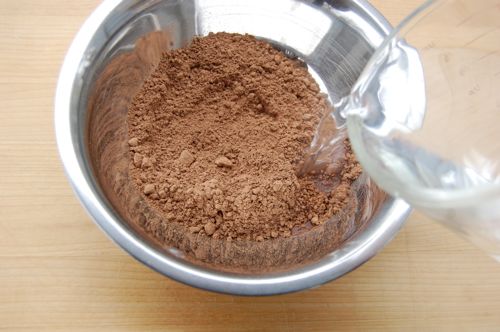
Whisk until smooth and set aside to cool completely.
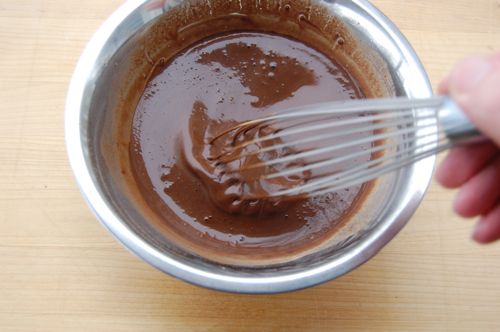
Once that’s done, prepare your pans and set the oven to 350. Next, sift your flour into the bowl of a mixer fitted with a paddle.
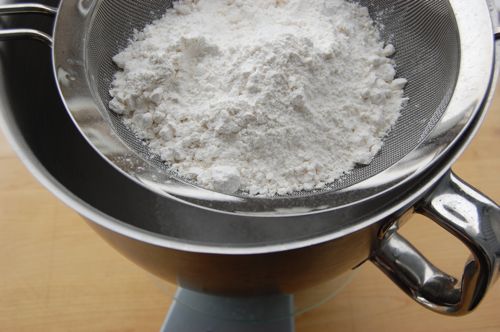
Add the rest of the dry ingredients and stir on low to combine.
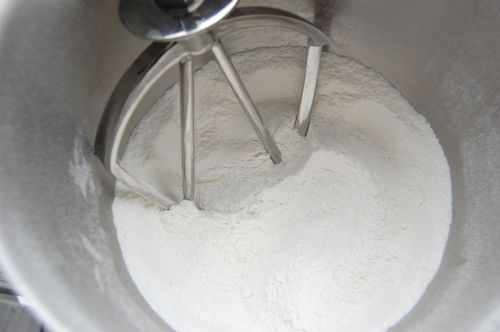
The last step before mixing is to prepare your egg mixture. Combine 1/4 of the cooled cocoa mixture with your room-temperature eggs…
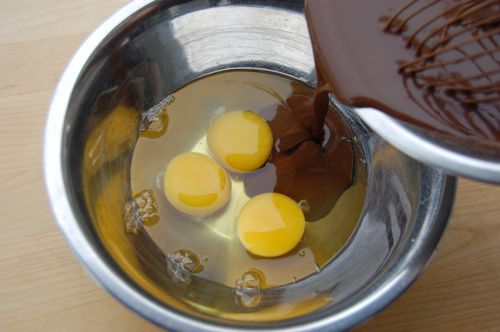
…and wreck’em.

Now it’s time to mix. Add the butter and the rest of the cocoa mixture to the dry ingredients.
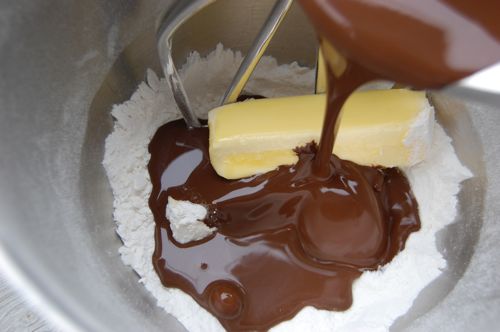
Stir on low for perhaps 30 seconds to moisten everything. Then turn the mixer up to medium and beat for 1 1/2 minutes until the batter is creamy and light in color. Scrape the bowl, then start adding the egg mixer in three additions.
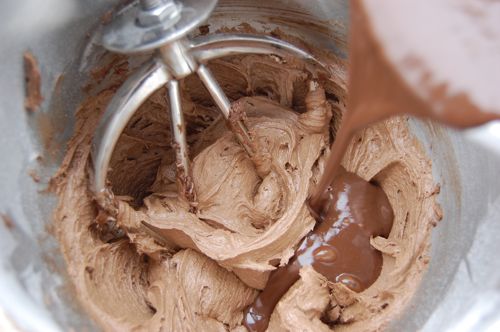
Beating the batter on medium for 20 seconds after each addition of egg, scraping the bowl well afterward. When all the egg mixture is incorporated, scrap the batter into your layer pans. You’ll be putting about 1 lb. 5 ounces of batter in each. Spread it even with a spatula.
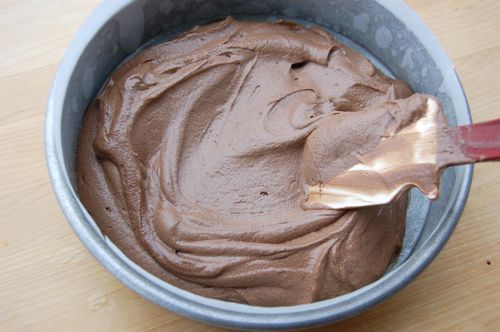
Bake for 25-35 minutes until the layers are springy to the touch. Cool the pans on a rack for 10 minutes…

…then turn them out onto a greased rack for ten minutes. I’ll give you a word of warning: these layers can be a bit sticky on their surfaces. As you can see, I lost some of the skin of the layers when I peeled off the parchment. This is not a big deal, just don’t leave the turned-out layers on the rack much more than 10 minutes, or you may have a more serious sticking problem on your hands.
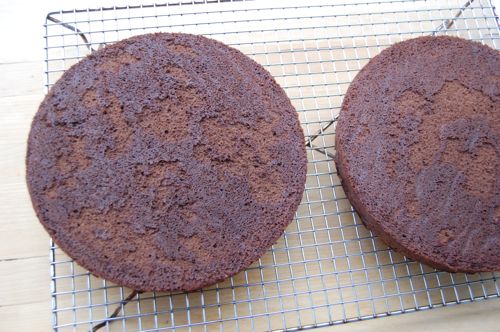
Once cool, wrap the layers in plastic wrap and store in the refrigerator.
UPDATE: Reader Chana says:
One bowl? I count three for that chocolate cake (cocoa, flour, eggs), and then there’s the measuring cup for the hot water, and the sifter. It’s par for the course (of course), but a one-bowl cake it ain’t. Just saying.
Very true, Chana, the terminology isn’t especially apt in this particular case, but that’s just what it’s called. Broadly, the “one bowl” method applies to a mixing method that incorporates the butter directly into the dry ingredients before the wet ingredients are added. So OK, this recipe adds more than just the butter to the dry ingredients. You’ve got me there too. But you know, this mixing strategy is also known as “quick method”, though I’ll grant you it isn’t especially quick in this case, either. But then it’s also called the “blending method.” Happy now? Sheesh!
Hello. I would just like to ask if i over-mix the batter, what will happen? Will it get a tough cake or not? I’m just a little afraid. But anyway thank you so much for this instruction,its so clear..Thank you!
Hi Akeille!
Don’t worry too much, pastries can smell fear. Over-mixing is not the end of the world. The activated gluten causes the cake to get tougher, yes. It also causes the layer to “crown”, i.e. bulge on the top. That makes the frosting process more difficult. I’m sure you’ll do a great job! Let me know how it turns out!
– Joe